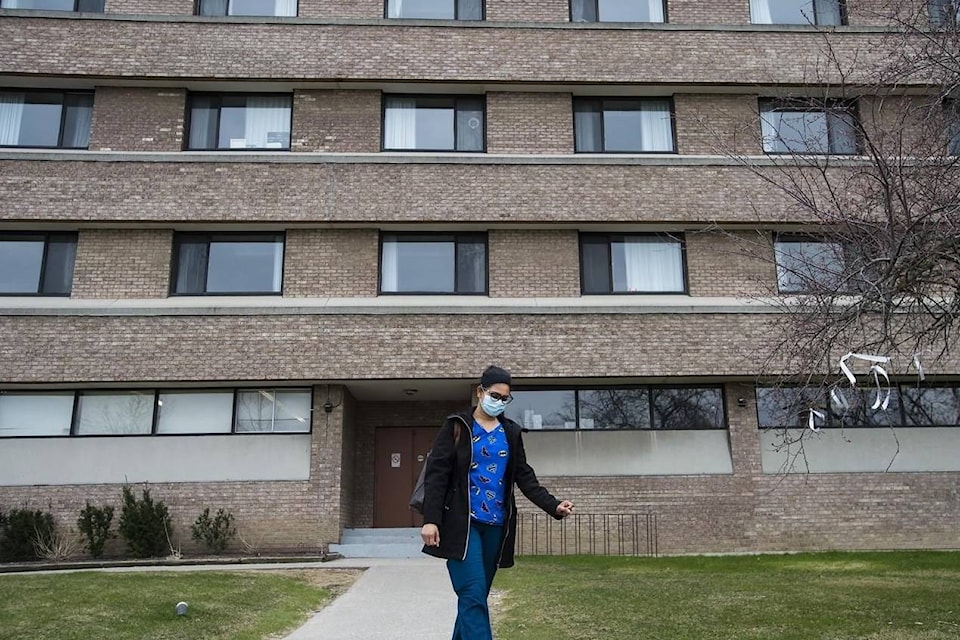Canada’s national budget watchdog says expanding and upgrading the country’s long-term care system would come with a hefty price tag.
A report published this morning by parliamentary budget officer Yves Giroux estimates ending wait lists, increasing staff pay and benefits, providing more hours of care each day and expanding home care could cost around $13.7 billion.
That includes more than $8 billion to add 52,000 new long-term care facility beds, increase private-sector wages 15 per cent and ensure every resident gets about four hours of direct care per day, an increase of almost one hour compared to current averages. It would take another $5.2 billion to ensure spending on home care amounts to no less than 35 per cent of total spending on long-term care.
That’s all over and above the $23.7 billion provincial and territorial governments spent on long-term care and home care in 2019-20. Giroux’s report also estimates the funding would have to increase by more than four per cent a year to keep pace with Canada’s aging population and inflationary pressures on wages.
The report, based on a motion put forward last March by Green MP Paul Manly, comes as a federal election appears imminent and political pressure is high on Ottawa to help provinces fix a dilapidated system that was ravaged by COVID-19.
Bonnie-Jeanne MacDonald, a research director at the National Institute on Aging at Ryerson University, said nobody should be surprised by the size of the figure, but added it’s time for Canadians to have a conversation about “what kind of Canada do we want people to age in.”
“Do we want the same fallout we saw happen in the last year to happen again?” she asked.
Manly said he thinks Canadians will be watching closely to see what parties offer to do for long-term care in the next election, noting it’s an issue not just for seniors living in care homes now, but also for their families, and for those seniors and older adults looking at their own options for the not-too-distant future.
“I think that people clearly want to see things fixed,” he said.
The pandemic raced through hundreds of Canada’s long-term care facilities, infecting more than a quarter of the 205,000 residents and killing more than 15,000 of them. That is more than half of Canada’s total COVID-19 death toll.
A report from members of the Canadian Armed Forces deployed to help staff care homes in Ontario and Quebec last year listed shocking conditions in some of the hardest hit facilities, including cockroach infestations, poorly paid and trained staff, residents left to sit in soiled clothing for hours, and others sleeping in crowded rooms, with little effort at all at infection control.
MacDonald said that report confirmed what those familiar with the system had known for years. But she said the pandemic didn’t just blow the lid off any illusions Canadians had about the standards of care homes for vulnerable seniors, it made most Canadians think they didn’t want to ever live in one.
A survey taken by the National Institute on Aging in July 2020 found almost 100 per cent of those asked said they had no interest in going to a long-term care facility, and as many as 70 per cent said that decision was influenced by the pandemic.
Federal and provincial governments have flocked to promise billions to fix the problems, and the PBO report does not take those into account in its analysis.
But MacDonald said the conversation may need to be more specific about whether adding beds and building more homes is the answer, or if we should be doing far more to help Canadians age at home. There is a time and a place for long-term care homes, such as for people with dementia who can’t safely live independently, she said, but most Canadians would prefer to live out their lives at home.
—Mia Rabson, The Canadian Press
RELATED: COVID-19 exposed a long-term care system already in crisis
